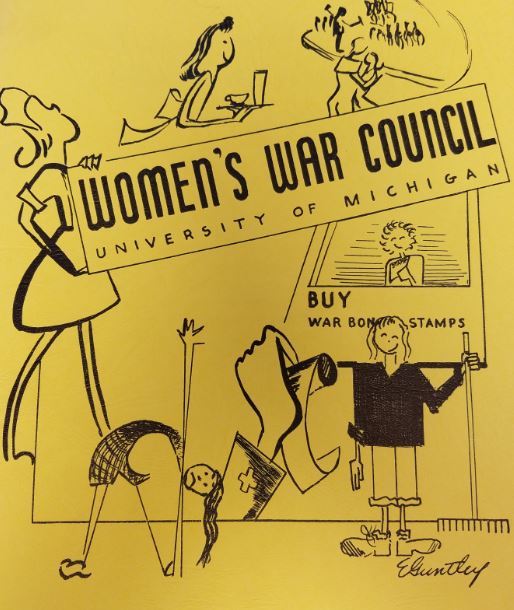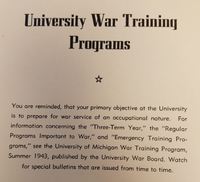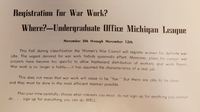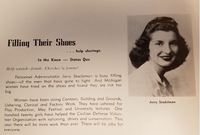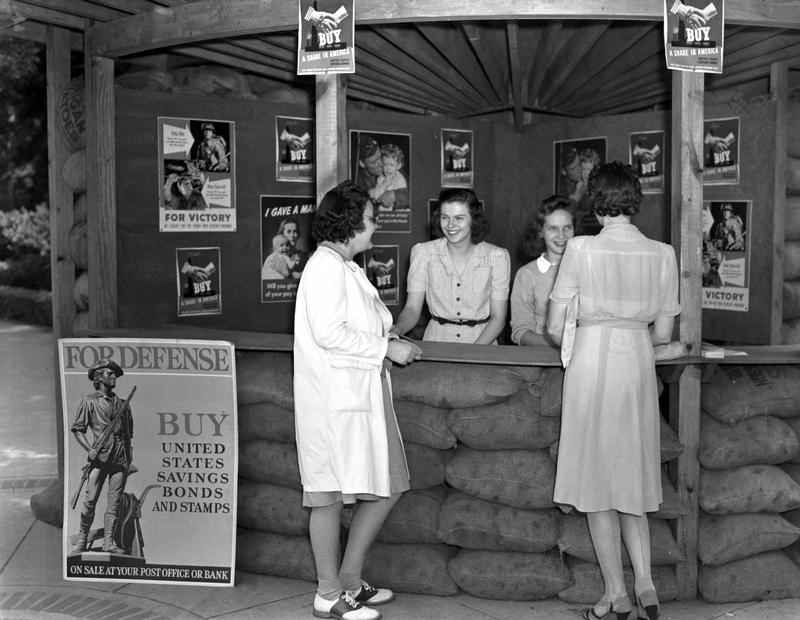World War II
By the 1940s, women had a more cemented position on campus. The Women's League building was completed in May of 1929, Esther Marsh Cram became the first woman elected to the Board of Regents, and Mosher-Jordan Hall, the first state-funded all-female dorm, was finally opened to Michigan women.
It is then, perhaps, at the onset of the Second World War that the true "total disruption" of the University of Michigan campus occured.1 Just as during the First World War, men left campus in droves to join the various positions. However, campus adapted to the changing role of women in society. As men left their positions on campus, women were needed to fill the vacancies. It is during this time that fields such as chemistry, physics, engineering, and astronomy were advertised heavily to female students.2
The University began offering many special wartime classes beginning in 1942, some of which included first aid classes, nursing classes, typewriting, motor mechanics, and braille. However, no University credit was offered for any of these courses.3 Despite these classes being lengthy and challenging, women were expected to do "their part" for the war effort without compensation or credit.
The University of Michigan sought the assistance of its female students in many ways and enabled them to mobilize by creating a Women's War Council for the wartime years. The War Council worked to encourage women to join the home front war effort, which often included activities such as donating blood, rolling gauze, and selling bonds.4
The War Council was celebrated as a success--its ability to inspire, mobilize, and equip women with resources to assist on the homefront was praised by the University. At the same time, women entered "routine maintenance work" roles, such as clearing snow, cleaning trash, and acting as waiters and busboys in dining halls.5
Ruth Bordin, author of Women at Michigan: The 'Dangerous Experiment,' solemnly adds that despite women taking over and excelling at men's jobs, they were still compelled to enter the Michigan Union not through the front door, but the north entrance.6
1. Ruth Bordin, Women at Michigan: The "Dangerous Experiment," 1870s to the Present (Ann Arbor: University of Michigan Press, 1999), 57.
2. "Courses Train College Coeds for War Work," Michigan Daily September 26, 1942, Bentley Historical Library, University of Michigan.
3. Ibid.
4. University of Michigan Women's War Council Booklet, "Women's Activities 1945-1946," Bentley Historical Library, University of Michigan.
5. Ruth Bordin, Women at Michigan, 57.
6. Ibid.


